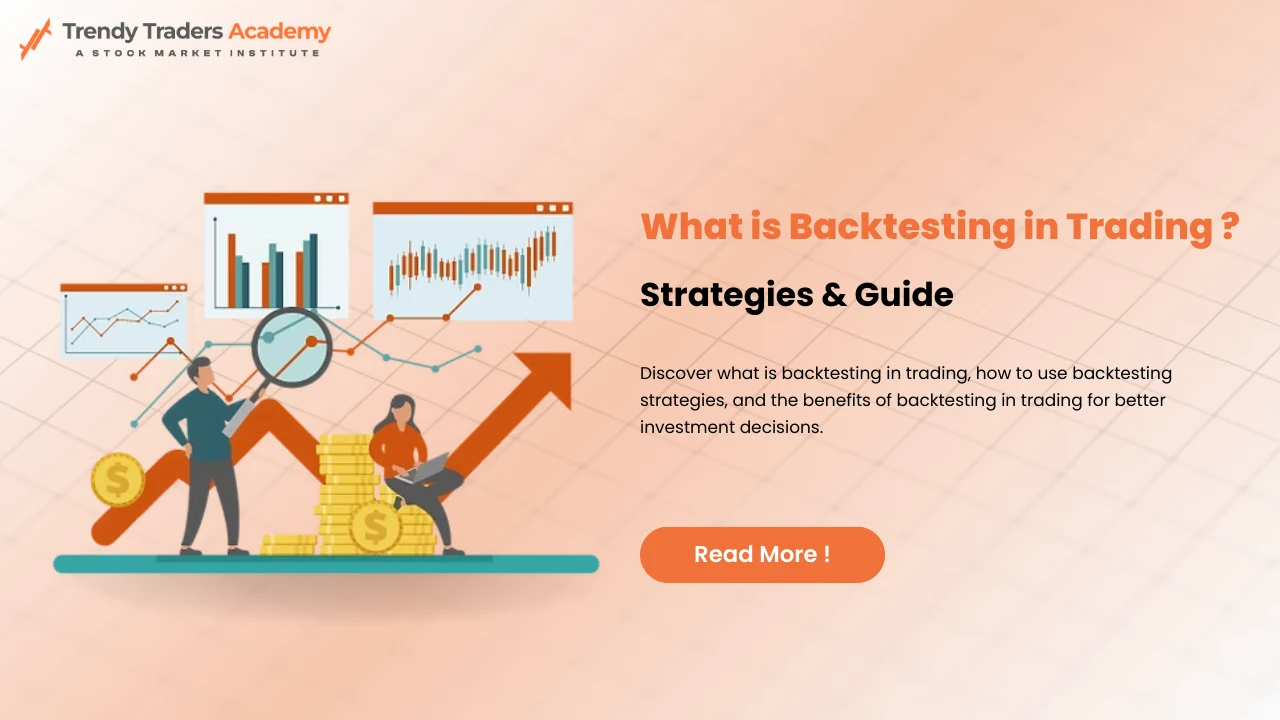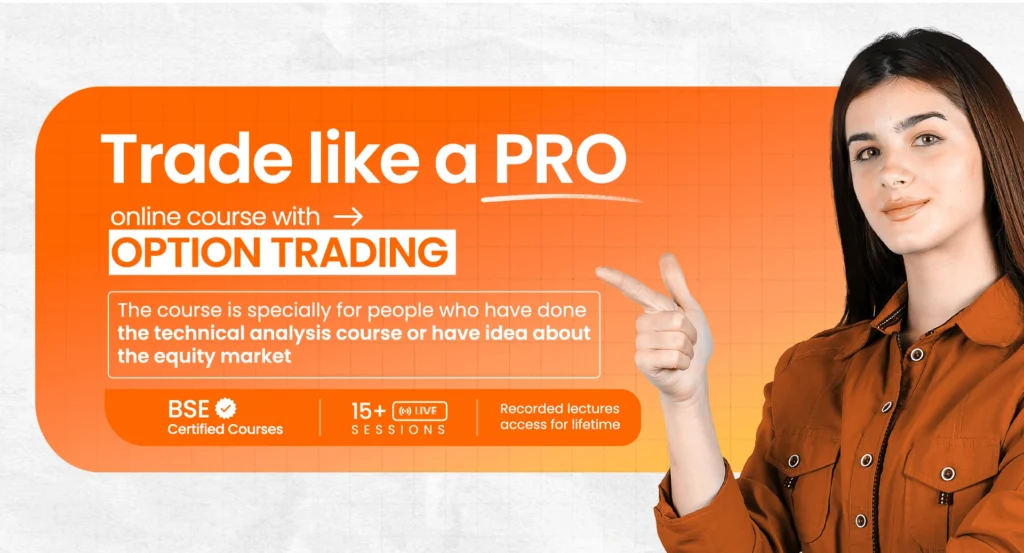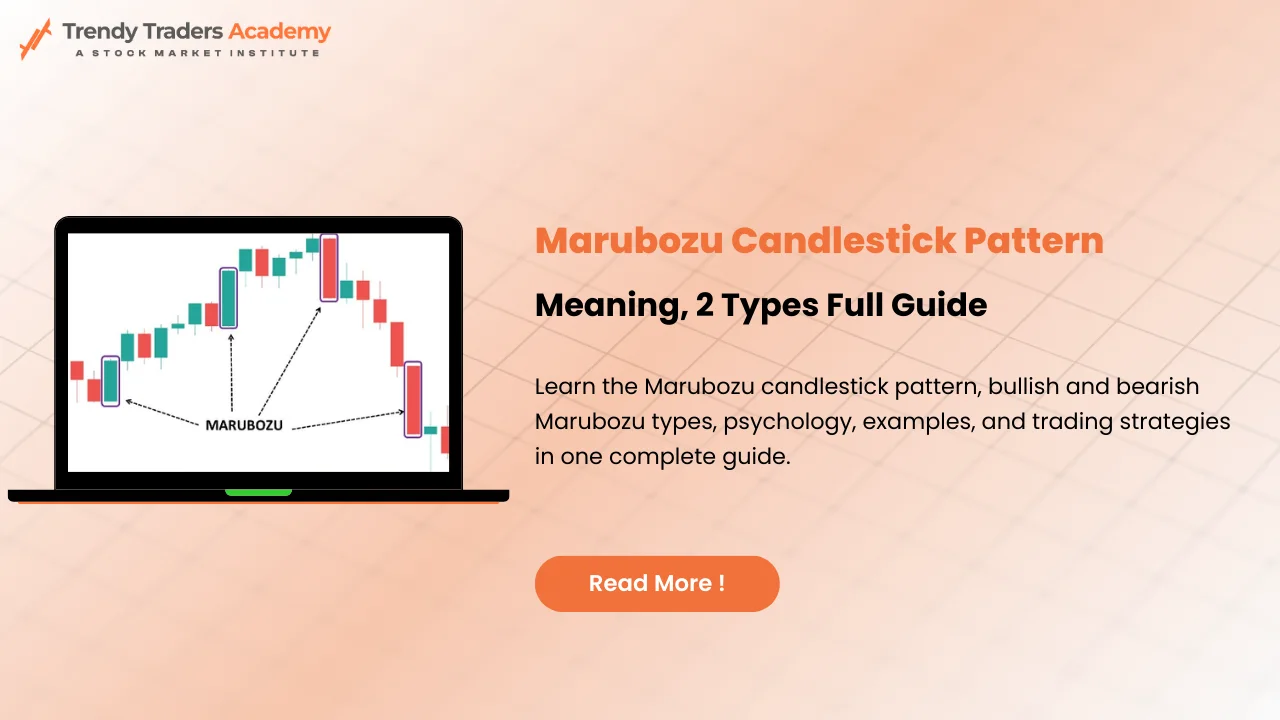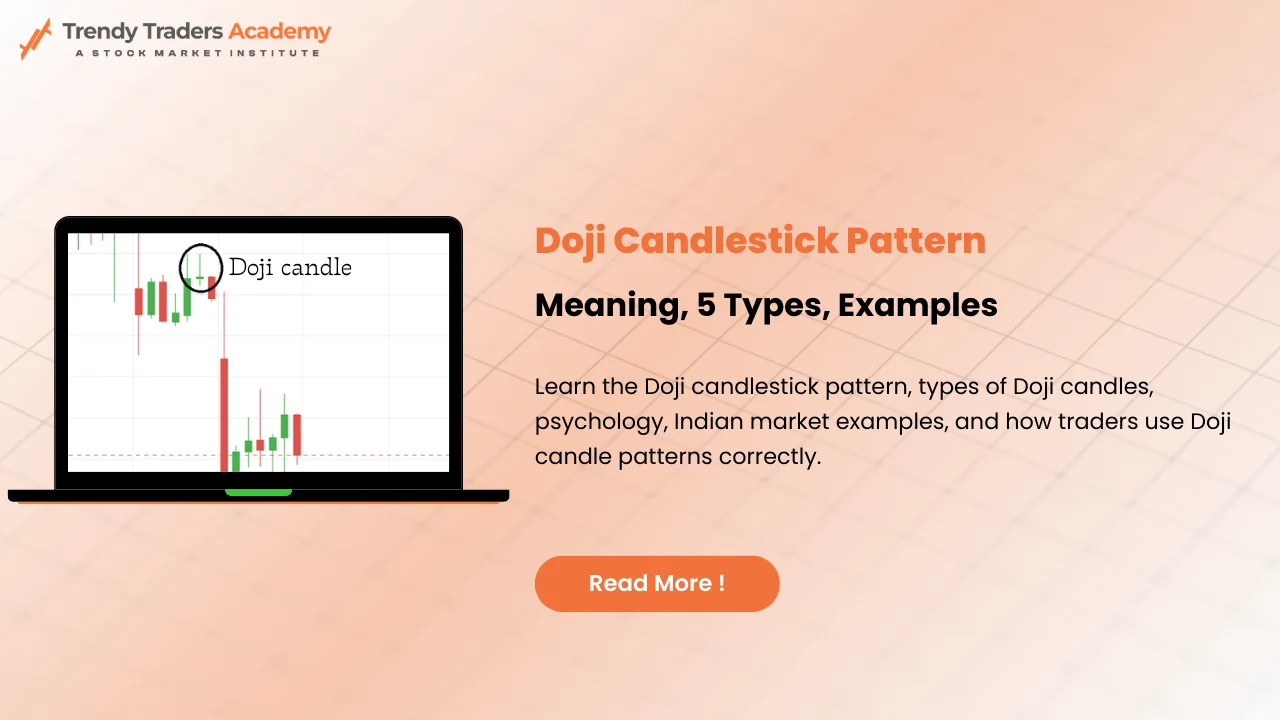
What is Backtesting in Trading ? Strategies & Guide
Do you wonder if your trading strategy which you designed would succeed in earlier market conditions? Trading backtesting enables investors to perform tests using historical data before they put their capital at stake. Backtesting functions precisely as a time-travel tool for traders. Traders can run their approaches on previous market information to determine their success rates.
Before risking live capital traders must perform backtesting to perfect their methods and techniques. The trading tool functions while retaining its essential value to operations. This article will dissect backtesting fundamentals while presenting top-performing trading backtesting strategies.
What is Backtesting in Trading ?
In trading practice backtesting represents a procedure where traders evaluate their trading strategies by running them against historical market information to understand both their performance and profitability. The evaluation method allows traders to verify how strategies would have performed in past market situations thus helping them refine their methodology before actual trading begins. Traders who replicate historical trade movements can find their strategy’s weaknesses and strengths so they can adjust their methods and enhance their risk control strategies.
Why is Backtesting Important ?
Backtesting is an essential process during any trading strategy development and validation.An algorithm helps traders along with investors check the effectiveness of their trading methods before investing actual market capital. Framing better trading decisions occurs through historic data analysis which helps traders determine their strategy outcomes ahead of time.
1. Evaluates Strategy Performance
Backtesting gives a detailed report of how a trading strategy would have done in the past. This allows traders to see if the strategy is profitable, stable, and consistent under varying market conditions. If a strategy makes profits in historical data every time, the chances of live trading success are higher.
2. Identifies Strengths and Weaknesses
By backtesting, traders can pinpoint the strengths and weaknesses of their strategy. If a strategy performs well in trending markets but struggles in sideways markets, traders can make necessary modifications to improve its overall efficiency.
3. Enhances Risk Management
Strategic implementation in trading heavily depends on risk management and backtesting allows traders to accurately assess strategy risk levels. Traders improve their position sizes by assessing drawdown limits and volatility measurements to set stop-loss settings and define their risk tolerance levels which minimizes loss potential.
4. Builds Confidence in Trading Decisions
Market testing creates confidence that traders can use when making their trading decisions. Consequently traders can handle their trading activities with data-driven structured approaches to eliminate both their fear along with hesitations.
5. The implementation of trading strategies through backtesting minimizes trading based on emotions together with hasty decision-making.
Short-term market movement makes traders take foolish trading choices when they lack backtesting. The function of backtesting is to build systematic trading rules as well as to remove emotional factors that include both fear and greed. Traders who believe in their established trading approaches tend to avoid excessive trading and premature exiting.
6. Helps Optimize and Improve Strategies
Traders utilize backtesting to modify and refocus their methods when testing different performance factors. Adjustments of stop-loss parameters together with entry criteria and technical indicators lead to overall strategy performance enhancement. Adaptive market adjustments become possible because of continuous optimization maintenance.
7. Saves Time and Money
Strategical market deployment without performing backtesting creates both financial losses and organizational waste of valuable time resources. The initial process of backtesting allows traders to eliminate unproductive trading strategies to spare their assets. Reallocation of capital becomes more effective through this process which prevents the spending of unnecessary funds on wasteful decisions.
8. Provides Valuable Statistical Data
Through backtesting users obtain critical statistical information comprising:
- The percent of profitable trades denotes the Win Rate.
- The Profit Factor demonstrates the relationship between sums of profit and losses.
- Maximum Drawdown – Largest peak-to-trough decline in the trading account.
- Sharpe Ratio – Measures risk-adjusted returns.
- The average predicted earnings for each trade constitute the expectancy statistic.
Different strategies become easier to compare with each other by using these metrics which aid traders in choosing their best-performing approach.
9. The system allows traders to execute tests under different market conditions.
The analysis of current market conditions through backtesting helps traders evaluate system performance under bull markets and bear markets and periods of high market fluctuations. A well-designed trading system should show stable results in different market phases.
10. Improves Long-Term Trading Success
Data-oriented trading approaches function better than hypothetical bets in creating successful trading results. Regular use of backtesting within their practice enables traders to achieve lasting profitability and stability when trading in the market.
How Does Backtesting Work ?
The structured backtesting procedure lets traders assess trading strategy performance through market history evaluation. Testing allows traders to inspect previous strategy results to predict their success in actual market trading. The procedure includes various essential steps which start with creating a strategy before moving into analysis of results and performance optimization.
Step-by-Step Process of Backtesting
1. Define the Trading Strategy
Before backtesting can begin, traders must establish a clear and well-defined trading strategy. A strategy should include:
Entry Rules: Conditions for entering a trade (e.g., moving average crossover, RSI levels, or breakout patterns).
Exit Rules: Conditions for closing a trade (e.g., stop-loss, take-profit, trailing stop, or reversal signals).
Position Sizing: How much capital is allocated per trade.
Risk Management: Rules for managing risk, such as setting a stop-loss or defining the risk-reward ratio.
Market and Time Frame Selection: Deciding which asset class (stocks, forex, commodities, or crypto) and which time frame (intraday, daily, weekly) to trade.
Having a structured set of rules ensures that backtesting results are objective and reliable.
2. Gather and Prepare Historical Data
The next step is to collect high-quality historical market data, which should include:
Price Data: Open, high, low, and close (OHLC) prices.
Volume Data: Number of shares or contracts traded.
Corporate Actions: Stock splits, dividends, or earnings reports (for equity trading).
Market Events: Economic news, interest rate changes, and geopolitical factors.
It is essential to use accurate and reliable data from trustworthy sources, as poor-quality data can lead to misleading backtesting results.
3. Implement the Strategy on Historical Data
After defining the trading strategy the trader applies rules to historical price movements using the gathered historical data. This can be done in two ways:
A. Manual Backtesting
Traders analyze historical charts and manually track how trades would have played out based on their strategy.
They record trade entries, exits, profit/loss, and other key metrics.
This method is time-consuming but helps traders gain a deeper understanding of market behavior.
B. Automated Backtesting
Traders use specialized backtesting software or programming languages (such as Python, MetaTrader, or TradingView) to automate the process.
The software runs the strategy across historical data and generates detailed performance reports.
Automated backtesting is faster and more efficient, allowing traders to test multiple strategies quickly.
4. Analyze Performance Metrics
After running the backtest, traders evaluate the performance of the strategy based on key metrics, including:
Net Profit/Loss: The total profit or loss generated over the testing period.
Win Rate (%): The percentage of profitable trades compared to total trades.
Risk-Reward Ratio: The average gain on winning trades versus the average loss on losing trades.
Maximum Drawdown: The largest peak-to-trough decline in the trading account.
Sharpe Ratio: A measure of risk-adjusted returns (higher values indicate better risk-reward performance).
Profit Factor: The ratio of total profit to total loss (values above 1 indicate a profitable strategy).
Expectancy: The average expected profit per trade, calculated using historical trade data.
By analyzing these metrics, traders can assess whether their strategy is viable and whether any adjustments are necessary.
5. Optimize and Refine the Strategy
Once the initial backtesting results are obtained, traders may find areas for improvement. Optimization involves:
Adjusting parameters: Fine-tuning indicators, entry/exit conditions, stop-loss levels, or position sizing.
Testing different timeframes: Checking whether the strategy works on different chart timeframes.
Validating robustness: Ensuring the strategy performs well under various market conditions, such as bull and bear markets.
Avoiding overfitting: Over-optimizing a strategy for past data can lead to poor performance in live trading. The strategy should be tested on different datasets to check for consistency.
Optimization should be done carefully to avoid curve-fitting, which happens when a strategy is overly tailored to past data and fails in real-world trading.
6. Perform Walk-Forward Testing (Out-of-Sample Testing)
To ensure that the strategy is not overfitted, traders use walk-forward testing:
The strategy is tested on a separate dataset (out-of-sample data) that was not used during backtesting.
If the strategy performs consistently across different time periods, it increases the likelihood of success in live markets.
7. Implement Forward Testing in a Demo Account
Before applying the strategy with real money, traders should test it in a simulated environment (paper trading or demo trading).
This allows traders to evaluate real-time execution without financial risk.
It helps validate whether the backtested results hold up in live market conditions.
The operational conditions of slippage along with liquidity factors and trading costs can be effectively evaluated by using real market conditions.
Types of Backtesting in Trading
There are two main types of backtesting:
Manual Backtesting: Traders manually analyze charts and record trade outcomes.
Automated Backtesting: Software runs algorithms to test strategies automatically.
Key Components of a Backtest
A robust backtest includes:
Entry & Exit Rules: Clearly defined buy and sell conditions.
Risk Management: Stop-loss and take-profit settings.
Market Data Selection: Relevant past data to ensure accuracy.
Backtesting Strategies & Techniques
Popular backtesting strategies include:
Moving Averages: Testing simple and exponential moving averages.
Breakout Strategies: Identifying price breakouts from key levels.
Mean Reversion: Testing trades based on price returning to average.
Pros and Cons of Backtesting in Trading
Pros:
- Provides insights into a strategy’s profitability.
- Reduces emotional decision-making.
- Helps refine risk management techniques.
Cons:
- Past performance does not guarantee future results.
- Historical data may not always reflect current market conditions.
Common Mistakes to Avoid in Backtesting
Prior to deploying trading strategies in real market conditions traders need backtesting as their essential tool for testing and improving their trading approach. Backtesting operations can create wrong outputs when not executed properly which results in traders making bad investment decisions. Look at these frequent trading mistakes during backtesting testing which also shows strategies for their prevention.
1. Overfitting (Curve-Fitting)
Mistake:
Overfitting occurs when a trading strategy is excessively optimized to fit past data, making it work well historically but fail in live markets.
Traders tweak parameters too much, making the strategy highly specific to past conditions rather than adaptable to future market movements.
How to Avoid:
Keep the strategy simple and avoid too many complex rules.
Test the strategy on different timeframes and market conditions to ensure robustness.
Use out-of-sample data (walk-forward testing) to check for consistency.
2. Ignoring Trading Costs and Slippage
Mistake:
Many traders backtest strategies without accounting for real-world costs like commissions, spreads, and slippage.
In reality, these costs can significantly impact profitability, especially in high-frequency trading.
How to Avoid:
Include realistic trading costs such as brokerage fees and slippage in your backtesting model.
Test the strategy on different levels of liquidity to see how execution affects performance.
Consider market impact, especially for large orders.
3. Using Low-Quality or Incomplete Data
Mistake:
Poor-quality historical data with missing price points, incorrect stock splits, or inaccurate volume data can distort results.
Using only a short time period for testing may not reflect different market conditions.
How to Avoid:
Source historical data from reliable providers.
Ensure data includes price action, volume, corporate events, and market anomalies.
Use a sufficiently large dataset that covers multiple market cycles.
4. Look-Ahead Bias
Mistake:
This occurs when a strategy accidentally uses information that would not have been available at the time of trading.
For example, using an indicator that relies on future price data to predict past trades.
How to Avoid:
Ensure all calculations are based on data available only up to the point of each trade.
Use proper coding practices when automating backtests to prevent future data leaks.
Avoid strategies that rely on hindsight knowledge.
5. Ignoring Market Conditions and Regime Changes
Mistake:
A strategy that worked well in a trending market may fail in a sideways or volatile market.
Not testing the strategy across different market conditions can lead to misleading results.
How to Avoid:
Backtest the strategy over different market cycles (bull, bear, sideways).
Analyze performance during economic events and news-driven volatility.
Use adaptive strategies that can adjust to changing market conditions.
6. Cherry-Picking Data
Mistake:
Selecting only favorable historical periods that make the strategy look profitable.
Ignoring losing trades or bad market conditions when analyzing results.
How to Avoid:
Test the strategy on a variety of historical periods, including both good and bad market conditions.
Use randomized testing (Monte Carlo simulations) to check for robustness.
Avoid hindsight bias when interpreting results.
7. Not Considering Psychological and Execution Challenges
Mistake:
A strategy may perform well in backtesting but be difficult to execute in real trading due to emotional factors.
Some strategies may require split-second decision-making that traders struggle to replicate in real time.
How to Avoid:
Simulate trades in a live demo account (forward testing) to understand execution challenges.
Develop the discipline to follow strategy rules without emotional interference.
Consider using automation if the strategy is too difficult to execute manually.
8. Ignoring Position Sizing and Risk Management
Mistake:
Many traders backtest strategies without defining position sizing rules.
Ignoring risk per trade can lead to large drawdowns and potential account wipeouts.
How to Avoid:
Use fixed percentage risk per trade or position sizing models like Kelly Criterion.
Test the impact of drawdowns and ensure risk management rules are in place.
Implement stop-loss and take-profit rules to prevent excessive losses.
9. Relying Only on Backtesting Without Forward Testing
Mistake:
A profitable approach from backtesting might prove unsuccessful during real-world market execution because of execution latency as well as slippage impacts and shifting market variables.
Many traders skip forward testing and go directly to live trading.
How to Avoid:
Perform forward testing using a demo or paper trading account.
Track real-time performance and compare it with backtested results.
Identify any discrepancies and adjust the strategy accordingly.
10. Not Reviewing and Adapting the Strategy Regularly
Mistake:
The market develops in ways that make profitable approaches become less effective with time.
Failure to check how effective your strategy remains could result in financial loss when using an outdated approach.
How to Avoid:
Continuously monitor strategy performance and make necessary adjustments.
Retest and optimize the strategy periodically.
Stay updated with market trends and new trading techniques.
Automated vs Manual Backtesting
Automated Backtesting is faster, more precise, and eliminates human bias.
Manual Backtesting allows traders to deeply understand market behavior.
Best Tools for Backtesting in Trading
Popular tools include:
TradingView (for manual and semi-automated backtesting)
MetaTrader 4 & 5 (for forex and automated strategies)
Amibroker (for professional algorithmic traders)
Real-Life Example of Backtesting in Trading
Suppose a trader develops a simple moving average crossover strategy. By backtesting it on historical data, they notice a 70% win rate. This insight helps them tweak and optimize the strategy for real trading.
How to Improve Your Backtesting Results
- Use a Large Data Set: More data leads to better accuracy.
- Include Realistic Costs: Consider commissions, spreads, and slippage.
- Avoid Bias: Ensure objectivity while analyzing results.
Backtesting vs Paper Trading: What's the Difference ?
- Backtesting is testing a strategy on historical data.
- Paper Trading is testing a strategy in a simulated live market environment.
How to Get Started with Backtesting Today
Choose a trading platform with backtesting capabilities.
Develop and define a strategy.
Run it on historical data and analyze results.
Conclusion
Backtesting strategies is a powerful tool that helps traders refine their strategies and gain confidence before risking real capital. However, it should be combined with sound risk management and continuous learning for the best results.
FAQ'S
What is backtesting in trading?
Backtesting in trading is the process of testing a strategy using historical market data to assess its effectiveness before applying it in live markets.
Can backtesting guarantee future success?
Market condition changes prevent backtesting from delivering certain future results yet backtesting reveals historical performance data about strategic approaches.
How long should I backtest a strategy?
A strategy should be backtested on at least a few years of historical data to ensure reliability and consistency.
Is automated backtesting better than manual backtesting?
Backtesting with automation occurs faster yet avoids human influence yet hand-operated backtesting enables traders to learn the market better.
What is the best tool for backtesting in trading?
The most suitable backtesting tools for traders depend on their requirements and they will find them among TradingView, MetaTrader and Amibroker.










